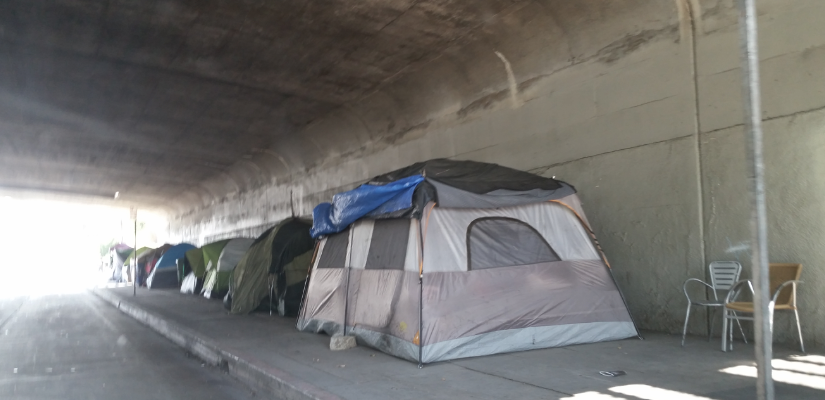CommentsCOUNTING THE HOMELESS--At the June meeting of the Los Angeles Regional Homelessness Advisory Council (RHAC), the Los Angeles Homeless Services authority (LAHSA) presented the 2019 Greater Los Angeles Homeless Count.
Los Angeles County, in a “point-in-time count,” identified 56,257 people experiencing homelessness, a 12% surge from last year’s count, while in the City of Los Angeles the tally surged to 36,300, a 16% increase.
“The homeless count is an estimate and the average between two years, 2018 and 2019, with a 1.2 % margin of error. We do a shelter count every year not necessarily a street count,” said Peter Lynn, executive director of LAHSA. The effort responds to a federal mandate using HUD-approved methodology, carried out by the USC Statistical and Demographic Program.
Point-in-time counts tallied homeless adults and youth, ages 18 -24, living in streets, vehicles, shelters, hotels, and transitional housing across Los Angeles County covering over 4,000 sq. miles, excluding Glendale, Pasadena, and Long Beach.
During the last 10 days of January, more shelter beds were deployed. The count was carried out at the end of the month when people who are at the edge of homelessness are more accessible. “In the beginning of month they have money and stay in hotels, but by the end of the month they are out in the street or in a shelter,” said Lynn.
Chris Ko, Director of Homeless Initiatives -- Home for Good, elaborated on the Coordinated Entry System (CES) as a data entry tool that provides specific agencies with the ability to connect to homeless individuals as well as enroll and assess them. “We are helping more people than ever before and tracking progress by use of this tool,” he said. “We are helping through prevention, outreach and engagement, interim housing and permanent housing placements.” In 2018, a total of 21,631 homeless people were housed. Of these, 34% or 7,258 people were placed in rapid re-housing, while 24% or 5,158 were placed in supportive housing and 42% or 9,215 people were placed in other types of permanent housing; 5,643 people were prevented from entering homelessness.
Through county, and city investments, thousands of new supportive and affordable housing units are in the pipeline, projected to be ready for occupancy in 2019-2020.
In 2018, CES data shows that 53% of people experiencing homelessness for the first time claimed economic hardship was a leading factor because of a lost job, eviction, weak social networks, loss of loved one, or wages that were below rental housing costs, according to Chris Ko. The Joint Center for Housing Studies of Harvard University reports that 721,000 of LA County households are severely rent-burdened, and one-third of LA households spend more than 50% of their household income on rent.
Meanwhile, wages have not kept pace with the cost of rent. An LA renter earning a minimum hourly wage of $13.25 would need to work 79 hours per week to afford rent for a one-bedroom apartment, per the Federal Home Loan Mortgage Corporation. May 2019 findings by the California Housing Partnership Corporation show Los Angeles needs 516,946 new affordable housing units to accommodate low-income renters.
The Count shows the Veteran homeless population slightly decreasing this year. Data shows 982 out 3,874 veterans have been sheltered this year, whereas in 2018, 2,824 of this population were housed.
In addition, family members experiencing homelessness increased by 6.4% and at the same time, an increase of this population is being sheltered with an increase of interim housing for families. Thus far, a total 7,111 out of 8,799 were sheltered whereas 7,693 were housed in 2018. In addition, increases in homelessness funding prevention and programs have assisted family members with homelessness. Interim housing for families, rapid-rehousing, and diversion and problem-solving specialists have been placed in each Service Planning Area.
Alarmingly, youth homelessness increased by 24%. This year, 1,734 have been sheltered out of 3,926. Last year, 2,050 were housed out of 3,164. There has been expansion of youth-specific interim housing, youth-specific rapid re-housing, and host home and youth family reconnection programs launched.
Similarly, senior homelessness increased by 8%. This year, 970 have been sheltered out of 5,225 whereas in 2018, seniors who were housed totaled 1,426 out of 4,827. Assistance resources are emerging with government and community agency partners working together to strengthen LA county response for seniors.
Twenty-nine percent of people experiencing homelessness report a serious mental illness and/or substance use disorder; 71% do not have a serious mental illness and/or report substance use disorder. Assistance programs are made available through the Department of Mental Health and the five new Mental Health Urgent Care and Sobering Centers on Skid Row.
(Connie Acosta participates in the neighborhood council system, is a member of the Los Angeles Press Club, and was present at the RHAC June meeting when LAHSA presented the Homeless Count information.) Edited for CityWatch by Linda Abrams.
















